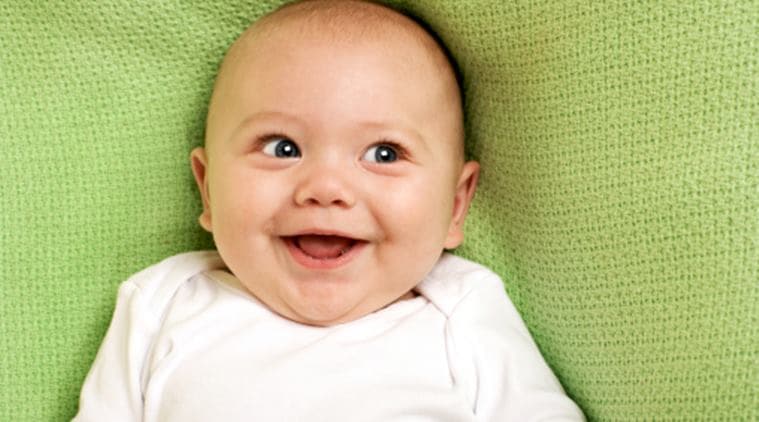The Early Years: What makes your baby laugh at different stages

In the first few months babies are learning how the world looks, feels and sounds in an ordinary context, so they don't "get the joke" when something's out of whack. Hence, a baby's first peals of laughter at around four months tend to be a response to arousal.

By Abha Ranjan Khanna
“Laughter activates the body’s natural relaxation response. It’s like internal jogging, providing a good massage to all internal organs while also toning abdominal muscles,” says Dr Gulshan Sethi, cardiothoracic surgeon.
That first smile at four to six weeks! It brings the deepest of joys to a mother and stimulates playfulness in a daddy’s heart!
Parents of newborn babies learn quickly about the various ways their baby cries. One type of cry means the baby is hungry, another says the child’s diaper needs to be changed and yet another may mean it simply wants some attention. Though these cries may seem indistinguishable to an outsider, parents learn to respond with exactly what their child needs.
Parents don’t tend to put as much thought into what their child’s laugh might mean. In fact, very few people think about differences in laughter at all! In the first few months babies are learning how the world looks, feels and sounds in an ordinary context, so they don’t “get the joke” when something’s out of whack. Hence, a baby’s first peals of laughter at around four months tend to be a response to arousal. A ride on a bouncing knee, for instance, gets a laugh because it’s physically stimulating.
But just a few months later, funny sounds coming from a toy will evoke a smile or a laugh. Starting around the sixth month, babies have enough information about the world around them to be surprised – and delighted – at the unexpected. “Infants experience pleasure from processing information that’s a little bit new and a little bit similar,” says Paul E McGhee, PhD, a developmental psychologist and author of Understanding and Promoting the Development of Children’s Humour (Kendall/Hunt). Peekaboo becomes a funny-bone favourite now, and almost anything that is decidedly out of the ordinary gives kids the giggles.
A leap in cognitive development around the second year enables a child to grasp auditory and visual jokes, explains Dr Kimberly Zimlich, MD, a paediatrician. “By their second birthday, kids have a basic mastery of simple rules and patterns. Hence, they appreciate the humour in breaking them,” she says. If, for instance, your child knows for sure that the cow says “moo,” she might find it very funny if you took a stuffed cat or dog and made it say “moo”.
As language skills develop, word play becomes a big part of toddler humour. Anything that rhymes is funny to a two-and-a-half-year-old.
A child’s sense of humour really takes flight when she starts enjoying imaginative play around age three. Pre-schoolers love to make their own jokes – putting on Mom’s high heels to get some laughs or changing the ending of a favourite song to nonsense words.
Simple things like making a sandwich talk or putting a hat on the dog makes life a lot more enjoyable. An added bonus: it fosters creative thinking!
How to make a baby laugh
Here are some great ways to get the giggles together.
Newborn to Age 1:
Play “This Little Piggy” with gentle tickling.
Say “Uh-oh!” with a silly voice and face whenever your baby deliberately drops something.
Play peekaboo and change your facial expression every time you reveal yourself.
Ages 1 to 2
Play “chase and cuddle”: Crawl after baby (“I’m going to get you!”) and reward the capture with snuggles and cuddles.
Make funny faces and encourage your child to imitate you.
Sing and speak in rhyme.
Ages 2 to 4
Play dress up: Encourage your child to put on your clothes and pretend to put on his/hers.
Have fun with food: Make a smiley face with ketchup on his/her egg and toast!
Surprise your child by placing toys in unusual places. Place a stuffed animal in among the blocks and discover it with a great exclamation: “How did teddy get there?!”
Laughter can work to bring people together. Legendary funny man Danny Kaye was the first Unicef Goodwill Ambassador and travelled the world meeting children. He said there was no such thing as a language barrier – his language was love and laughter and he engaged with children instinctively. “Children are the same the world over,” said Danny, who remained a Goodwill Ambassador for 33 years until his death in 1987. “They may have a different culture – but an ache or a laugh is universal.”
(The writer is an occupational therapist.)
Source: Read Full Article




